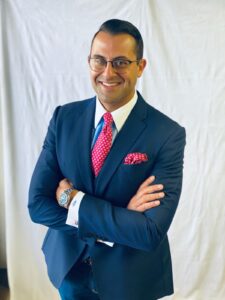The journey of stroke recovery is often characterized by challenges, setbacks, and triumphs as individuals strive to regain independence, mobility, and quality of life. Rehabilitation plays a pivotal role in this journey by Dr Ameer Hassan Texas, offering hope and support to stroke survivors as they navigate the path to recovery. In this article, we explore strategies for optimal rehabilitation to empower stroke survivors and maximize their potential for functional improvement and long-term success.
Central to navigating the stroke journey is the recognition of the unique and individualized nature of rehabilitation. Stroke affects each person differently, depending on factors such as the type and severity of the stroke, the extent of brain damage, pre-existing health conditions, and personal goals and preferences. As such, rehabilitation must be tailored to meet the specific needs and capabilities of each individual, taking into account their physical, cognitive, emotional, and social dimensions of recovery.
One of the key strategies for optimal rehabilitation is early and intensive intervention. Research has shown that early initiation of rehabilitation, ideally within the first few days or weeks following a stroke, can lead to better outcomes in terms of motor function, mobility, and activities of daily living. Early intervention capitalizes on the brain’s plasticity and adaptive capacity, facilitating neural reorganization and functional recovery. Intensive rehabilitation, characterized by frequent and prolonged therapy sessions, further enhances the effects of early intervention by providing ample opportunities for practice, repetition, and skill acquisition.
Moreover, a multidisciplinary team-based approach is essential for comprehensive stroke rehabilitation. Rehabilitation teams typically consist of various healthcare professionals, including physical therapists, occupational therapists, speech therapists, psychologists, social workers, and rehabilitation nurses, working collaboratively to address the diverse needs of stroke survivors. Each team member brings unique expertise and perspectives to the rehabilitation process, contributing to a holistic and integrated approach that addresses physical, cognitive, and psychosocial aspects of recovery.
In addition to traditional rehabilitation modalities, emerging technologies and innovative interventions are transforming the landscape of stroke rehabilitation. Virtual reality, robotics, exoskeletons, and brain-computer interfaces are among the cutting-edge technologies being employed to enhance therapy outcomes, improve engagement and motivation, and provide novel avenues for Dr Ameer Hassan Texas. These technologies offer immersive and interactive experiences that simulate real-world environments, facilitate task-specific training, and promote neuroplasticity, leading to more effective and efficient rehabilitation outcomes.
Furthermore, family and caregiver involvement is crucial for supporting stroke survivors throughout the rehabilitation journey. Caregivers play a vital role in providing emotional support, assisting with activities of daily living, facilitating communication, and promoting adherence to therapy regimens. By involving caregivers in the rehabilitation process, healthcare professionals can empower them with the knowledge, skills, and resources needed to provide optimal care and support to their loved ones, fostering a supportive and nurturing environment for recovery.
In conclusion, navigating the stroke journey requires a multifaceted and collaborative approach that addresses the physical, cognitive, emotional, and social dimensions of recovery by Dr Ameer Hassan Texas. Strategies for optimal rehabilitation include early intervention, intensive therapy, multidisciplinary teamwork, incorporation of emerging technologies, and active involvement of family and caregivers. By embracing these strategies, stroke survivors can embark on a path of healing, resilience, and restoration, ultimately achieving their goals and reclaiming their lives after stroke.
